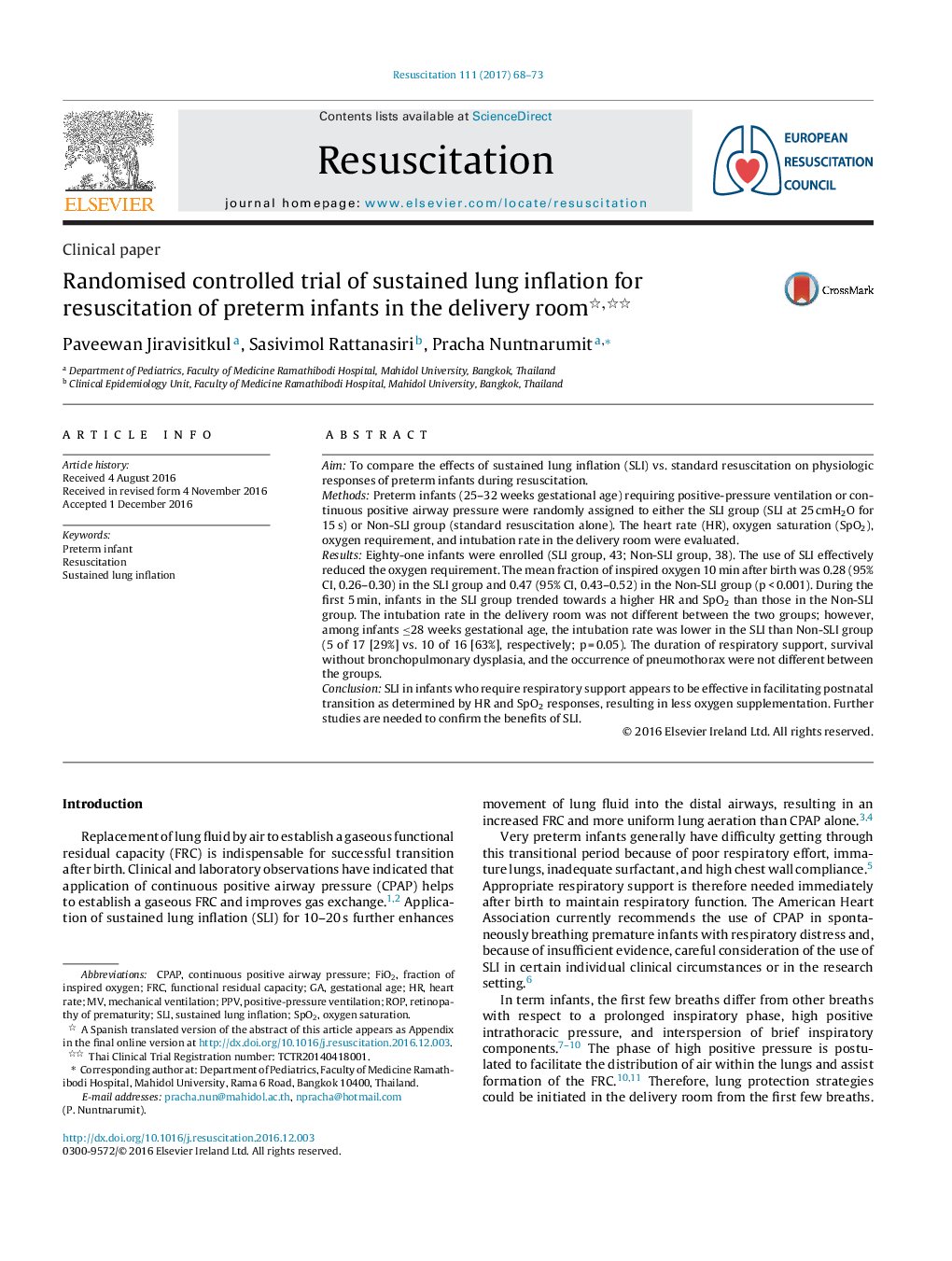| Article ID | Journal | Published Year | Pages | File Type |
|---|---|---|---|---|
| 5620215 | Resuscitation | 2017 | 6 Pages |
AimTo compare the effects of sustained lung inflation (SLI) vs. standard resuscitation on physiologic responses of preterm infants during resuscitation.MethodsPreterm infants (25-32 weeks gestational age) requiring positive-pressure ventilation or continuous positive airway pressure were randomly assigned to either the SLI group (SLI at 25 cmH2O for 15 s) or Non-SLI group (standard resuscitation alone). The heart rate (HR), oxygen saturation (SpO2), oxygen requirement, and intubation rate in the delivery room were evaluated.ResultsEighty-one infants were enrolled (SLI group, 43; Non-SLI group, 38). The use of SLI effectively reduced the oxygen requirement. The mean fraction of inspired oxygen 10 min after birth was 0.28 (95% CI, 0.26-0.30) in the SLI group and 0.47 (95% CI, 0.43-0.52) in the Non-SLI group (p < 0.001). During the first 5 min, infants in the SLI group trended towards a higher HR and SpO2 than those in the Non-SLI group. The intubation rate in the delivery room was not different between the two groups; however, among infants â¤28 weeks gestational age, the intubation rate was lower in the SLI than Non-SLI group (5 of 17 [29%] vs. 10 of 16 [63%], respectively; p = 0.05). The duration of respiratory support, survival without bronchopulmonary dysplasia, and the occurrence of pneumothorax were not different between the groups.ConclusionSLI in infants who require respiratory support appears to be effective in facilitating postnatal transition as determined by HR and SpO2 responses, resulting in less oxygen supplementation. Further studies are needed to confirm the benefits of SLI.
